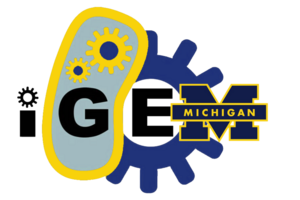Team:Michigan
From 2011.igem.org
(Difference between revisions)
| (One intermediate revision not shown) | |||
| Line 3: | Line 3: | ||
<html> | <html> | ||
<div id="ContentArea" class="ColorWhite"> | <div id="ContentArea" class="ColorWhite"> | ||
| - | <div class="tile ColorBlue" > | + | <div class="tile ColorBlue" id="TLBlueTile"> |
<img src="https://static.igem.org/mediawiki/2011/a/a5/CellDNA_Logo.png" id="BLImageHome" /> | <img src="https://static.igem.org/mediawiki/2011/a/a5/CellDNA_Logo.png" id="BLImageHome" /> | ||
<div class="RightBar" > | <div class="RightBar" > | ||
| Line 39: | Line 39: | ||
This year’s project aims to develop a cell patterning platform based on oligonucleotide-directed cell binding to substrate surfaces. Our approach entails engineering cells to selectively bind to certain nucleotide sequences (via surface display of DNA binding proteins), allowing for guided assembly of defined cell arrays on surfaces patterned with oligonucleotides. These oligonucleotides can be arranged to form an image, and when the cells bind they act as pixels, or... | This year’s project aims to develop a cell patterning platform based on oligonucleotide-directed cell binding to substrate surfaces. Our approach entails engineering cells to selectively bind to certain nucleotide sequences (via surface display of DNA binding proteins), allowing for guided assembly of defined cell arrays on surfaces patterned with oligonucleotides. These oligonucleotides can be arranged to form an image, and when the cells bind they act as pixels, or... | ||
</p> | </p> | ||
| - | < | + | <h1>Pix-Cells!</h1> |
</div> | </div> | ||
Latest revision as of 02:28, 29 September 2011









Project Introduction
This year’s project aims to develop a cell patterning platform based on oligonucleotide-directed cell binding to substrate surfaces. Our approach entails engineering cells to selectively bind to certain nucleotide sequences (via surface display of DNA binding proteins), allowing for guided assembly of defined cell arrays on surfaces patterned with oligonucleotides. These oligonucleotides can be arranged to form an image, and when the cells bind they act as pixels, or...
 "
"